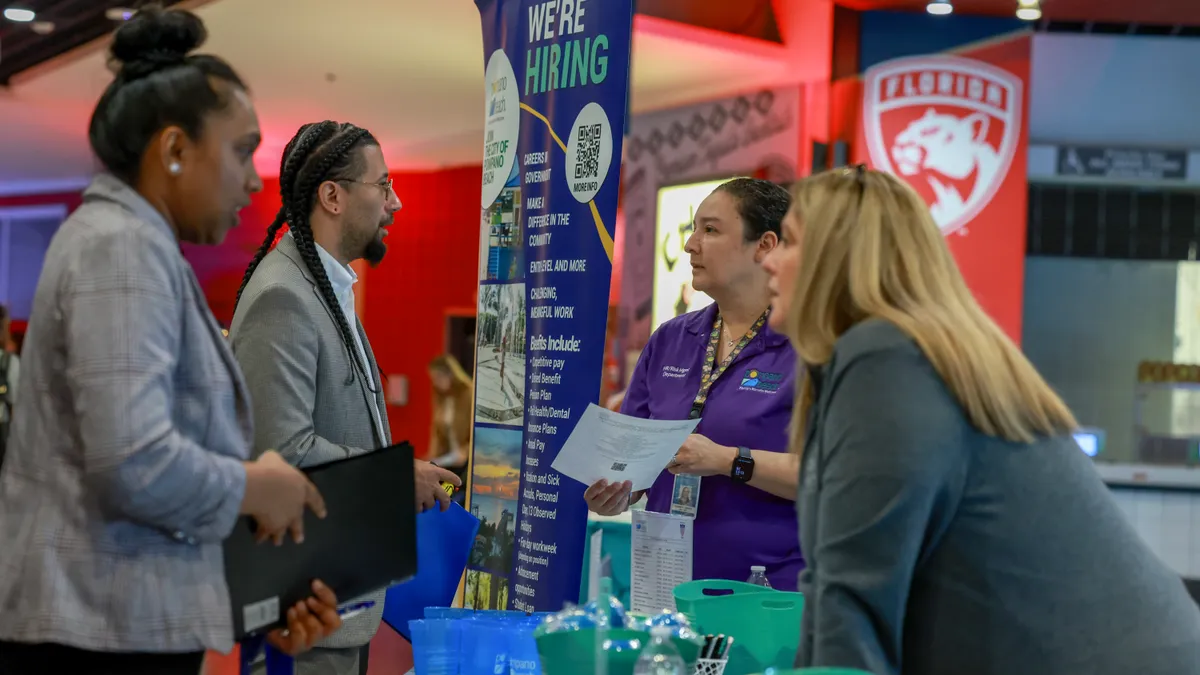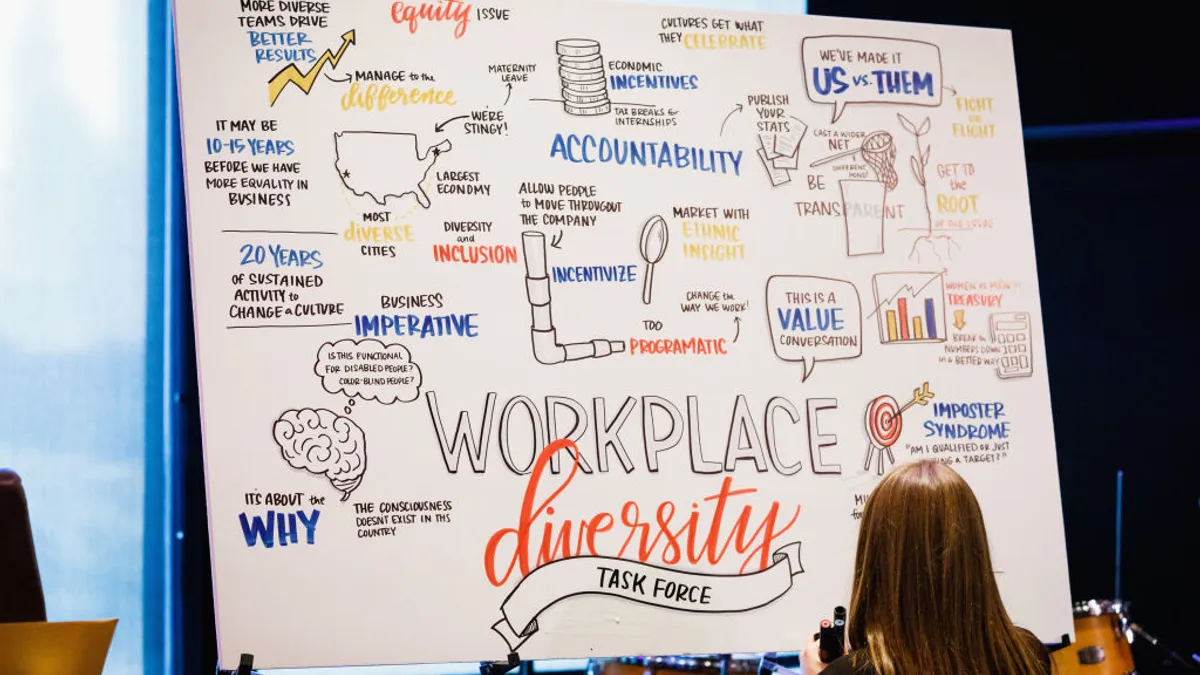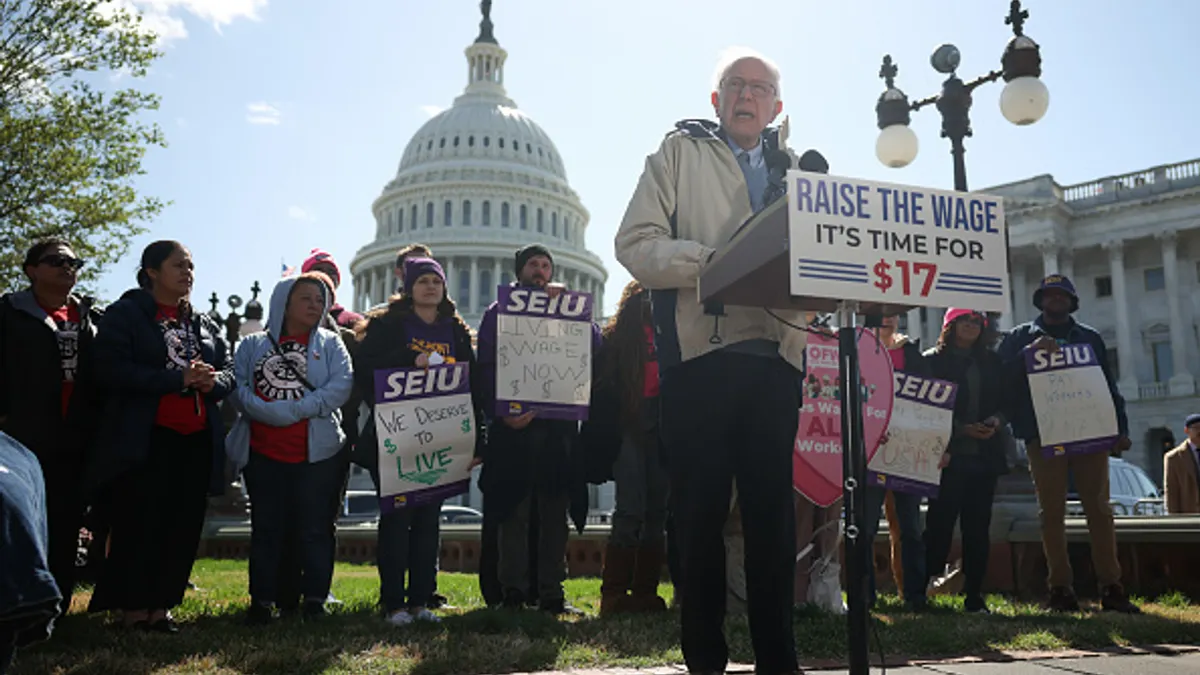As news of layoffs at major U.S. companies circulates, studies forecast the trend will continue into the new year.
A recent Resume Builder study found that 61% of respondents said their organizations will likely see layoffs in 2023. More than half of those who predicted layoffs next year estimated that those cuts will eliminate 30% or more of their workforce.
A report from PwC delivered a similar prognosis. Eighty-one percent of CHROs surveyed said they will use at least one workforce-reducing tactic to deal with a forthcoming recession. The tactics include layoffs, voluntary retirement and hiring freezes.
These figures likely leave HR pros and managers in charge of implementing layoffs dreading the months ahead. “Layoffs are certainly a difficult and sensitive topic to approach,” Paul Rubenstein, chief people officer at Visier, told HR Dive in an email. But HR pros can’t let the challenging nature of layoffs keep them from assisting affected employees through the process.
HR Dive spoke with Rubenstein and Gemma Dale, co-founder of the Work Consultancy, to compile three tips HR pros can use to help workers facing layoffs.
#1: Communicate the news transparently
Both Rubenstein and Dale emphasized the importance of transparency in the layoff process. “The first step is to be transparent from the very beginning,” Rubenstein said. “There can’t be any deception or sugar coating when it comes to decisions that affect people’s lives. Leaders need to be honest and blunt about the current state of the company and the decision-making process leading up to any layoffs.”
Dale echoed this thought. Employees must understand why the company is implementing layoffs and how they affect them at every stage, she said. “This does not change the situation itself,” she acknowledged, but “it allows employees to leave the business in the most positive way possible in the circumstances, keeping the door open to a relationship in the future.”
An openness regarding layoffs will put leaders in the spotlight, Rubenstein and Dale warned. Leaders must be ready to answer hard questions and take accountability for the company’s decisions.
Rubenstein noted that transparency is not only important during layoffs, or only to those who are affected. Trust and transparency between employers and workers is critical throughout the entire employee lifecycle. And transparency will help create resilience among the workers who remain after layoffs.
“Focus on how to build resilience with the workforce that isn’t impacted,” he said. “Company leaders should not just listen to their remaining employees' concerns, but address them too.”
#2: Treat employees with empathy
As company leaders and HR share news of layoffs transparently, they also need to ensure they’re treating workers with as much empathy as possible, Rubenstein and Dale said.
To ensure empathy, HR needs to remember that “these aren’t just former workers or former employees, but that these are real people who experienced one of the toughest moments one can experience in their career,” Rubenstein said; HR must actively consider what affected workers could be feeling, anticipate what their needs are and try to offer help where it can.
“The worst that can happen is employees feeling blindsided by layoffs,” Rubenstein said. “But by being transparent and keeping a conversation with your employees, HR leaders can demonstrate how they value their employees and show that they don’t see people as disposable.”
Dale agreed. By meeting employees with dignity, employees who must go through layoffs may still feel they have been treated fairly overall, she said.
#3: Tap into your network
As major companies have announced layoffs, many HR pros and managers have taken to LinkedIn to signal their support and notify their network of potential candidates. After Asana announced its decision to reduce its workforce, Anna Binder, head of people at Asana, posted about her willingness to introduce laid off workers to her professional contacts.
Binder’s offer, and those like it, is “a decent thing to do,” Dale said. “Networking is a key way that people find out about opportunities and get hired. If we can help people at their most difficult period, then why wouldn’t we?”
Rubenstein noted that LinkedIn can be a good way to communicate help to employees, but it’s not the only way. He warned that some will not want to discuss their employment situation on such a public forum.
“But HR departments should be offering help and resources to their former employees, whether that’s connecting them with their network or referring them to customers and suppliers,” he said.
Whether HR pros explore these tips or other strategies to help workers through layoffs, Rubenstein recommended a frank, direct approach to a topic that is often emotional and challenging.
“Don’t avoid the noise,” he said. “Rip the Band-Aid off and be direct with your messages.”






















